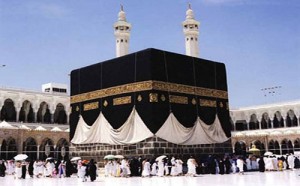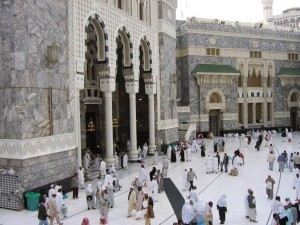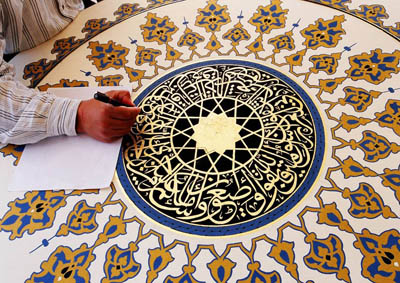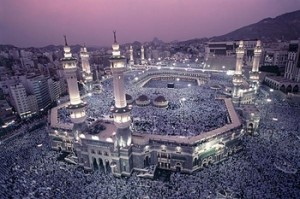Islamic architecture encompasses a wide range of both secular and religious styles from the foundation of Islam to the present day.What today is known as Islamic architecture owes its origin to similar structures already existing in Roman,Byzantine and Persian lands which the Muslims conquered in the 7th and 8th centuries.
The Islamic conquest of Persia in the 7th century availed the Muslims with the vast wealth of architectural innovation developed over the centuries, from the great roads, aqueducts and arches of the Roman Empire, to the Byzantine basilicas and horseshoe and pointed arches The Islamic architects first utilized these native architects to build mosques, and eventually developed their own adaptations. Islamic architecture thus is directly related to Persian and Byzantine architecture.
In addition, Arabic calligraphy is associated with geometric Islamic art (the Arabesque) on the walls and ceilings of mosques as well as on the page. Instead of recalling something related to the reality, the Muslim use expression from their holy book ” Quran”.
In fact, arabesque is an element of Islamic art usually found decorating the walls and window screens of mosques and Muslim homes and buildings. The arabesque is an elaborate application of repeating geometric forms that often echo the forms of plants, shapes and sometimes animals . it is a way of decorating using beautiful, embellishing and repetitive Islamic art instead of using pictures of humans and animals which is forbidden in Islam.
Masjid al-Haram
Masjid Al-Haram (the Grand Mosque):
It is the largest mosque in the world and surrounds one of Islam’s holiest places, the Kaaba. Muslims face in the direction of the Kaaba 5 times a day while performing formal worship, salat.


Mosque of Sultan Ahmed:
“The Mosque of Sultan Ahmed, Istanbul, on a prominent site on the Hippodrome complementary to that of Hagia Sophia, is distinguished by its six minarets. Four enormous piers dominate the interior and carry a dome which is buttressed, as in Shehzade Mosque, by four subsidiary half-domes… It is noted for its predominently blue Iznik tilework — whence it derives the name ‘The Blue Mosque”.— Sir Banister Fletcher

Taj Mahal:
“A white marble tomb built in 1631-48 in Agra, seat of the Mugal Empire, by Shah Jehan for his wife,”—Marvin Trachtenberg and Isabelle Hyman.

ــــــــــــــــــــــــــــــــــــــــــــــــــــــــــــــــــــــــــــــــــــــــــــــــــــــــــــــ
References:
Islamic architecture : http://en.wikipedia.org/wiki/Islamic_architecture
Taj mahal : http://www.greatbuildings.com/buildings/Taj_Mahal.html
Mosque of Sultan Ahmed: http://www.greatbuildings.com/buildings/Mosque_of_Sultan_Ahmed.html




Much more coudl be said